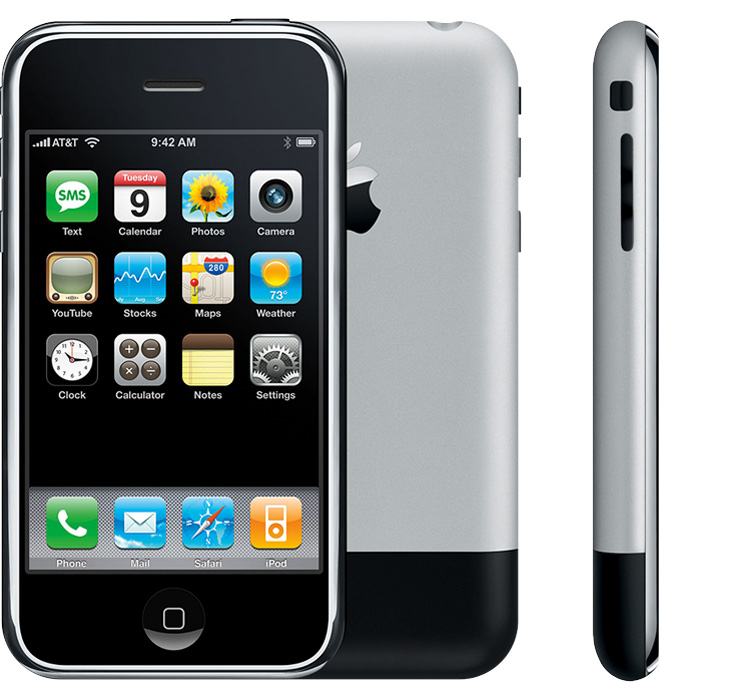12 iPhone

The original iPhone was an instant game changer. It was the phone every geek had dreamed of in a sleek, stylish design that attracted anyone with a cell phone.
Defining Features
Multi-touch, wireless communications, accelerometer, and proximity and ambient light sensors.
About iPhone
Rumors of an iPhone had been circulating for years as it seemed like the natural next step from iPod. But this was so much more. This was a glass and aluminum revolution that fit in the palm of your hand.
Goodbye clunky keyboards. Hello Multi-Touch. A stylus? Yuck. The camera quality was okay. No 3G. But Wi-Fi just got a lot more interesting. Entertainment? Check. Maps? Check (but no GPS). Internet? Yup. Wait… it’s not a WAP browser! But… no apps? I mean, it had Web apps (if you’re into that sorta thing).
Okay. So the first iPhone was far from perfect. But it brought so much to the table in such a beautiful way that from the moment Steve Jobs pulled it from his pocket, one thing was for certain: cellphones would never be the same.
iPhone Introduced
- 3.5” capacitive, multi-touch display (163 ppi)
- iPod library that synced with iTunes
- A (better) Web browser
- 2 MP camera
- Mono loud speaker, receiver speaker, and microphone
- Headphone jack (recessed)
- Second-generation cellular support
- Wi-Fi
- Bluetooth 2.0
- Flash storage (4, 8, or 16 GB)
- 3-axis accelerometer (for display orientation)
- Ambient light sensor (for automatic backlight dimming)
- Proximity sensor (to turn off display when the phone is up to a user’s ear)
- Location tracking via Wi-Fi and cellular (no satellite)
- Maps (Google Maps)
